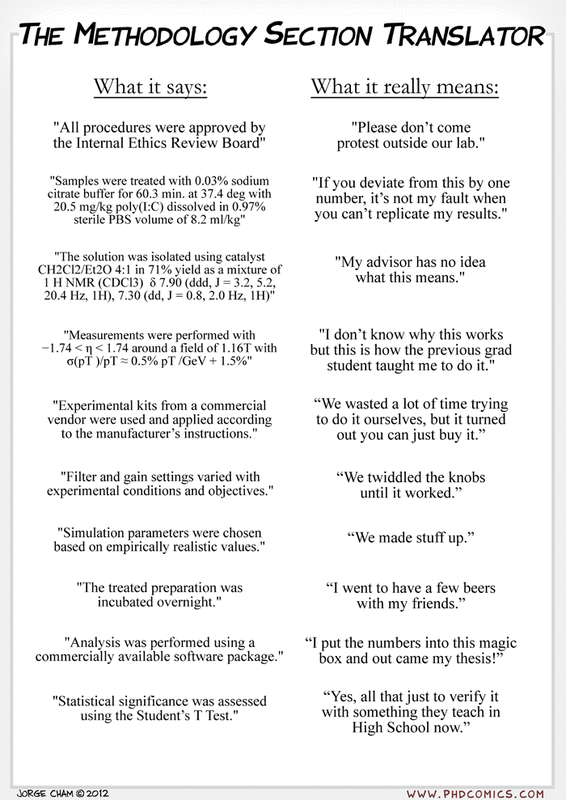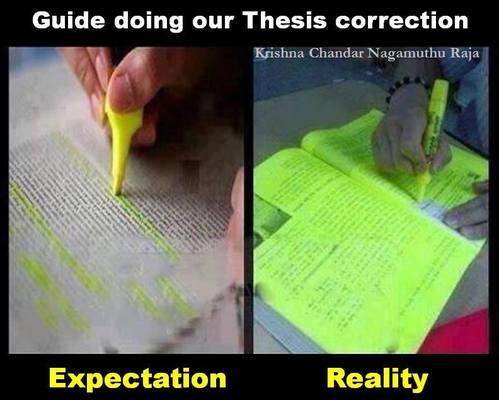Doing your Corrections
You will need to read the examiners report and extract all the required points, then summarizing them on paper to get started, obtaining the copies of the thesis with the examiners comments can also be extremely helpful also, especially for a case when your supervisor is very busy.
Dealing with Corrections
After you are informed of the viva outcome you will be told to do some corrections, these corrections will be passed on to you through a letter of points.
Constructive Corrections
To all researchers 99.999999999999999999 % of submitted thesis will have minor corrections. The researcher would feel that his work has been understood and based on that he feels that his corrections will turn his work into something that will open new frontiers for his future. The examiners would offer him a job or would want him to work on something similar. His supervisor wants him to work with him on the same project for post doc or for a couple of months after his viva.
None Constructive Corrections
To all researchers 0.1 % of submitted thesis will have major corrections The researcher would feel that his work has not been understood and based on that he feels that his corrections will delay him one or more years in getting work due to the state of no income he will live. Going through the comments you will notice logical comments that have no logic coming from the examiner. This happens when the department and supervisor select the wrong examiners or in a case the student has been forced to submit the thesis without been given additional time or in the case where the supervisor dose not read the students thesis before submission.
1- Who is done the none referenced figure?
2- Asking about stated mathematical formulas and their units.
3- I know what a linear line looks like.
If your supervisor dose not attend the viva.
1- Who is done the none referenced figure?
2- Asking about stated mathematical formulas and their units.
3- I know what a linear line looks like.
If your supervisor dose not attend the viva.
Starting Work on the Corrections
You can add the examiners comments onto the the word file in different colors where the internal examiners comments in green and the externals comments in red. You need to see which are the important notes by the examiners the internal or external. The following list can be used as a check list for the correction process. The researcher would require to have the examiners thesis copies with their comments when the researcher dose not have any input from his supervisor.
1- Spelling mistakes in paragraphs.
2- Spelling mistakes in Graphs.
3- Which paragraphs needs to be re-written.
4- Which results need to be re-done.
5- Adding new sections to the thesis proposed by the examiners.
6- Moving paragraphs from one section to another in the thesis.
7- How to deal with the sections not understood by the examiners.
8- How to deal with an idea in a paragraph or line asked to be referenced.
9- The paragraphs which are required to be removed out from the thesis.
10- Which graphs need to be removed such as ones that the examiners see unnecessary.
11- Adding new x-y plots for analysis when asked for more rigorous plots.
12- How necessary is it to add requested definitions to some terms by the examiners.
2- Spelling mistakes in Graphs.
3- Which paragraphs needs to be re-written.
4- Which results need to be re-done.
5- Adding new sections to the thesis proposed by the examiners.
6- Moving paragraphs from one section to another in the thesis.
7- How to deal with the sections not understood by the examiners.
8- How to deal with an idea in a paragraph or line asked to be referenced.
9- The paragraphs which are required to be removed out from the thesis.
10- Which graphs need to be removed such as ones that the examiners see unnecessary.
11- Adding new x-y plots for analysis when asked for more rigorous plots.
12- How necessary is it to add requested definitions to some terms by the examiners.
After going through the previous points take a sheet of paper and make 12 columns. The number of rows depend on how many found corrections. o Get started by opening the external or internal thesis and start going through the thesis page by page and filling the rows depending on what column.
Then comes Checking your Thesis steps:
Steps to check your thesis, it is preferable that you conduct the steps with someone with you so both can check it instantaneously, this can be done through the following check list:
1- Check the symbols definitions.
2- Check the figures numbering.
3- Check the equations numbering and indexing.
4- Check the references.
5- Check the spelling of words shown in the figures.
6 -Check the units formats written in the figures.
It might be necessary to check your thesis grammar through somebody not working in the field because no one can perfect all aspects of grammar in a language.
Steps to check your thesis, it is preferable that you conduct the steps with someone with you so both can check it instantaneously, this can be done through the following check list:
1- Check the symbols definitions.
2- Check the figures numbering.
3- Check the equations numbering and indexing.
4- Check the references.
5- Check the spelling of words shown in the figures.
6 -Check the units formats written in the figures.
It might be necessary to check your thesis grammar through somebody not working in the field because no one can perfect all aspects of grammar in a language.
Joint Examiners Report
Under Construction.
Internal Examiners Report
Under Construction.
External Examiners Report
Under Construction.
Unless otherwise noted, all content on this site is @Copyright by Ahmed Al Makky 2012-2015 - http://cfd2012.com

